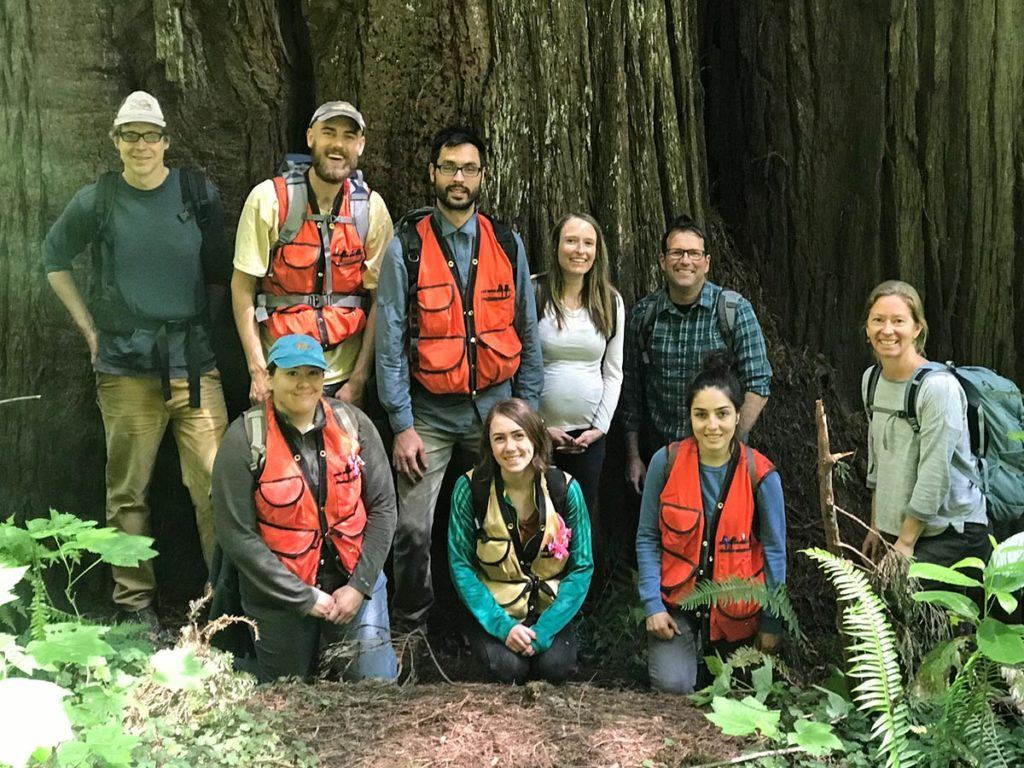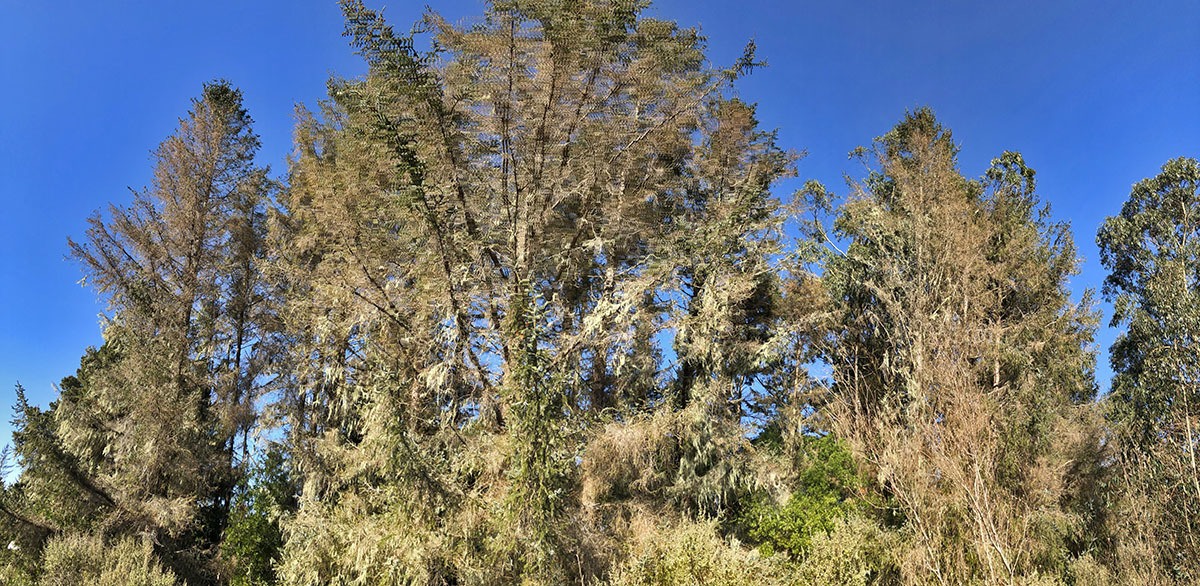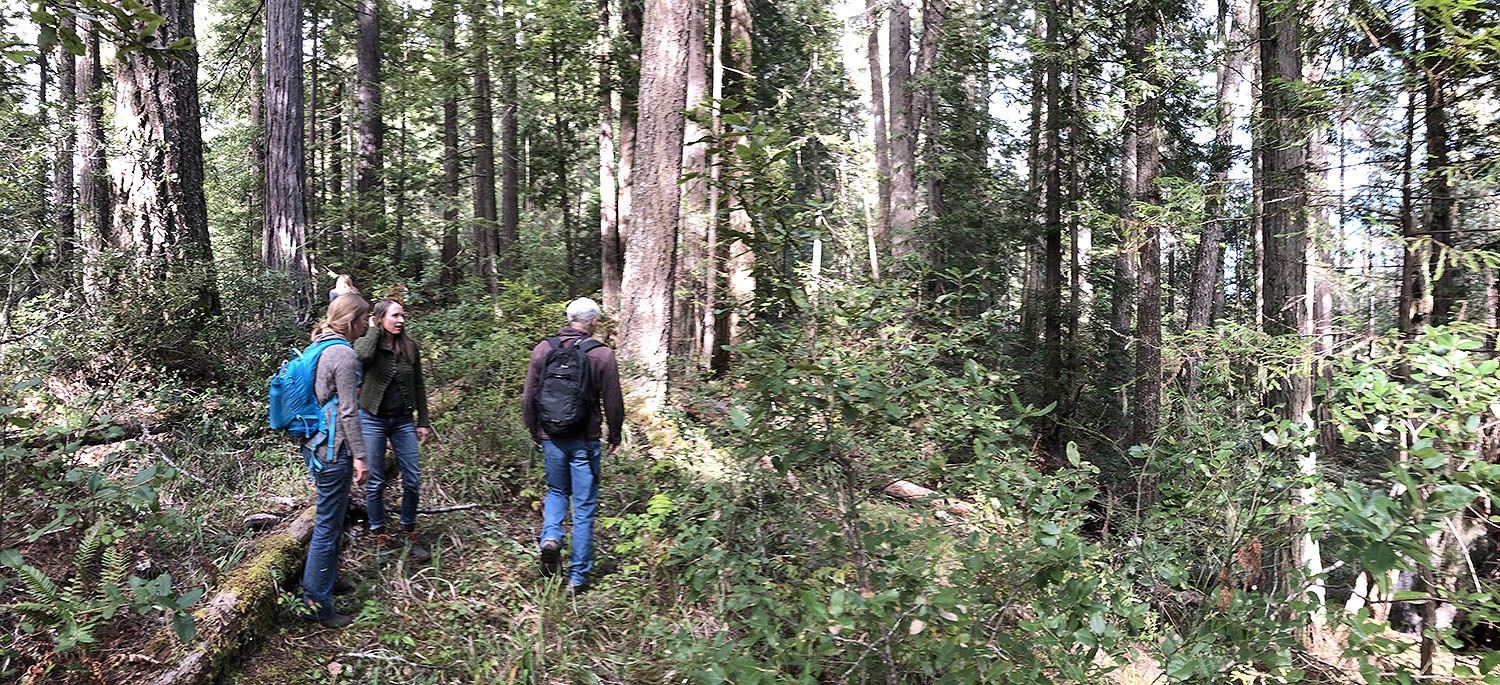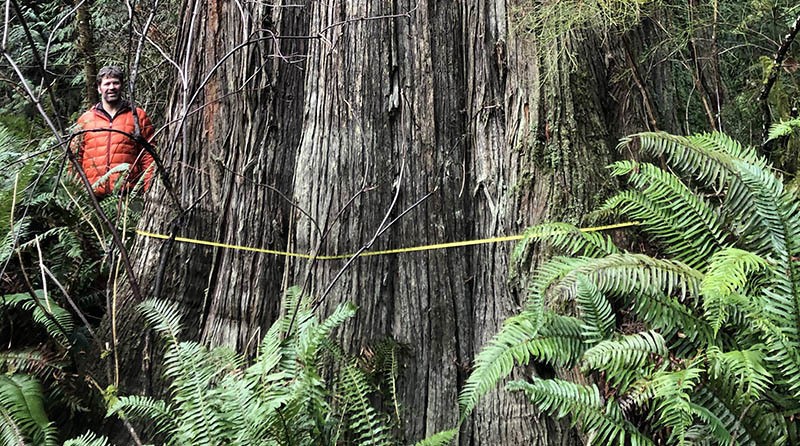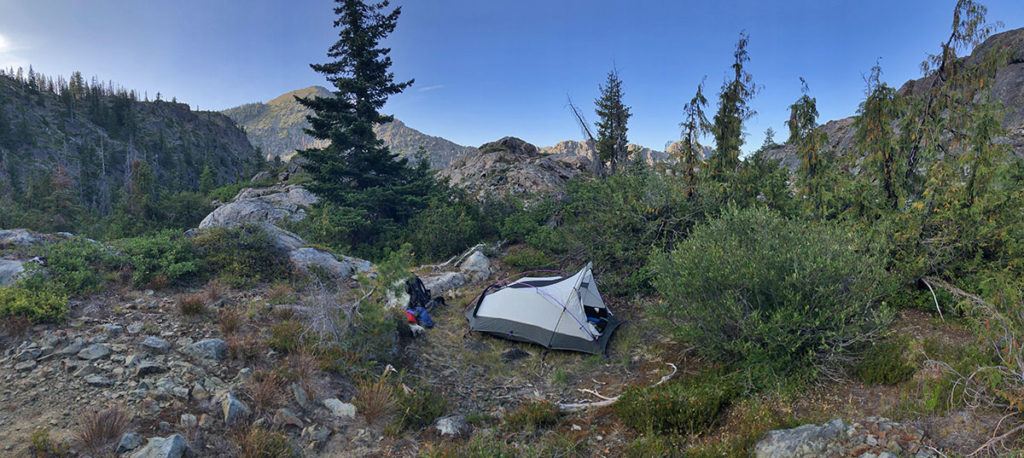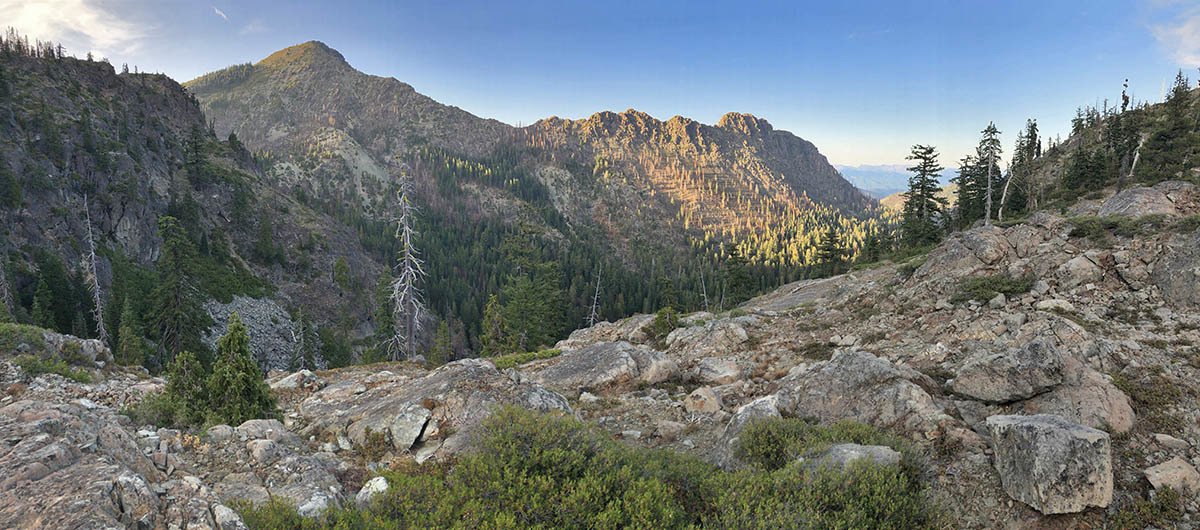Where Highway 101 hugs the Pacific Coast in Humboldt County, north through Del Norte County, Sitka spruce (Picea sitchensis) are loosing needles at an alarming rate. This phenomenon, caused by the non-native green spruce aphid (Elatobium abietinum), grew into a noticeable problem in winter 2019-2020. The aphid thrives during winters with warmer than normal temperatures. Last year’s defoliation was especially severe in Oregon and the aphids continues to move south. Sitka spruce decline in California is in its early stages.
Continue reading “Sitka Spruce Decline in California”All Species Grove
Exploring the remnant old-growth of the Humboldt County Headwaters
In late 1985, a family company in Humboldt County was over taken by a large corporation from Texas. Within a few months, the profit-driven Maxxam Corporation submitted (under the name Pacific Lumber) a furtive timber harvest plan with a rush order to log some of the last, largest swaths of remaining old-growth redwoods in the world. Thankfully, a small group of concerned environmentalists were watching. Leading the guard was Greg King who, along with others, organized and Headwaters Forest Campaign which soon became the largest forest protection civil disobedience demonstration in America’s history.
Continue reading “All Species Grove”Western Redcedar in California
From Alaska south to Oregon western redcedar (Thuja plicata) is the signature tree of the Pacific Northwest temperate rainforest. It has mythic importance to native people, as entire civilizations were sustained, in large part, by this species. Natives of the Pacific Northwest regarded the species as a “Long Life Maker” (Stewart 1984) because they used it for canoes, paddles, houses, roofs, clothes, bedding, rope, cooking, and even medicine. Few giant trees were actually felled before the arrival of Europeans because old snags were usable for many years after death. Highly resistant to rot, the snags or parts of live trees would be harvested instead of the entire live tree. After building a dugout canoe from a tree, Lewis and Clark named it “arbor vitae,” Latin for “tree of life” (Arno 2007).
Continue reading “Western Redcedar in California”My other side of the Mountain
Exploring upper Copper and Indian creeks for yellow-cedar
I have been mapping and inventorying yellow-cedar (Callitropsis nootkatensis) in California for the past four years. This process could have been much more efficient if it wasn’t for the 2018 Eclipse Complex and the 2019 Natchez Fire (more below) that virtually closed the Siskiyou Wilderness for the past two summers.
Successful surveys before this year have doubled the previously known area of this rare conifer from approximately 5 hectares in 2015 to 11 hectares by 2018. One of the largest gaps in surveys was within upper Indian and Copper creeks in the Klamath River watershed. I predicted this is where the largest stands of the species would be–little did I know how large an area I would find.
Continue reading “My other side of the Mountain”Redwood Experimental Forest
Exploring the Yurok RNA
Many years back I discovered that there were little known biodiversity hotspots that had been described by a handful of ecologists. These places had been designated as Research Natural Areas for the primary purposes of maintaining biological diversity, providing baseline ecological information, and encouraging research and university natural-history education. These places are all relatively pristine and sometimes close to roads in non-wilderness areas.
It was in this way that I first learned about the Redwood Experimental Forest that also contains the Yurok RNA. But I had never visited this place despite the fact it has been on my list since the early 2000s. That all changed in June 2019.
